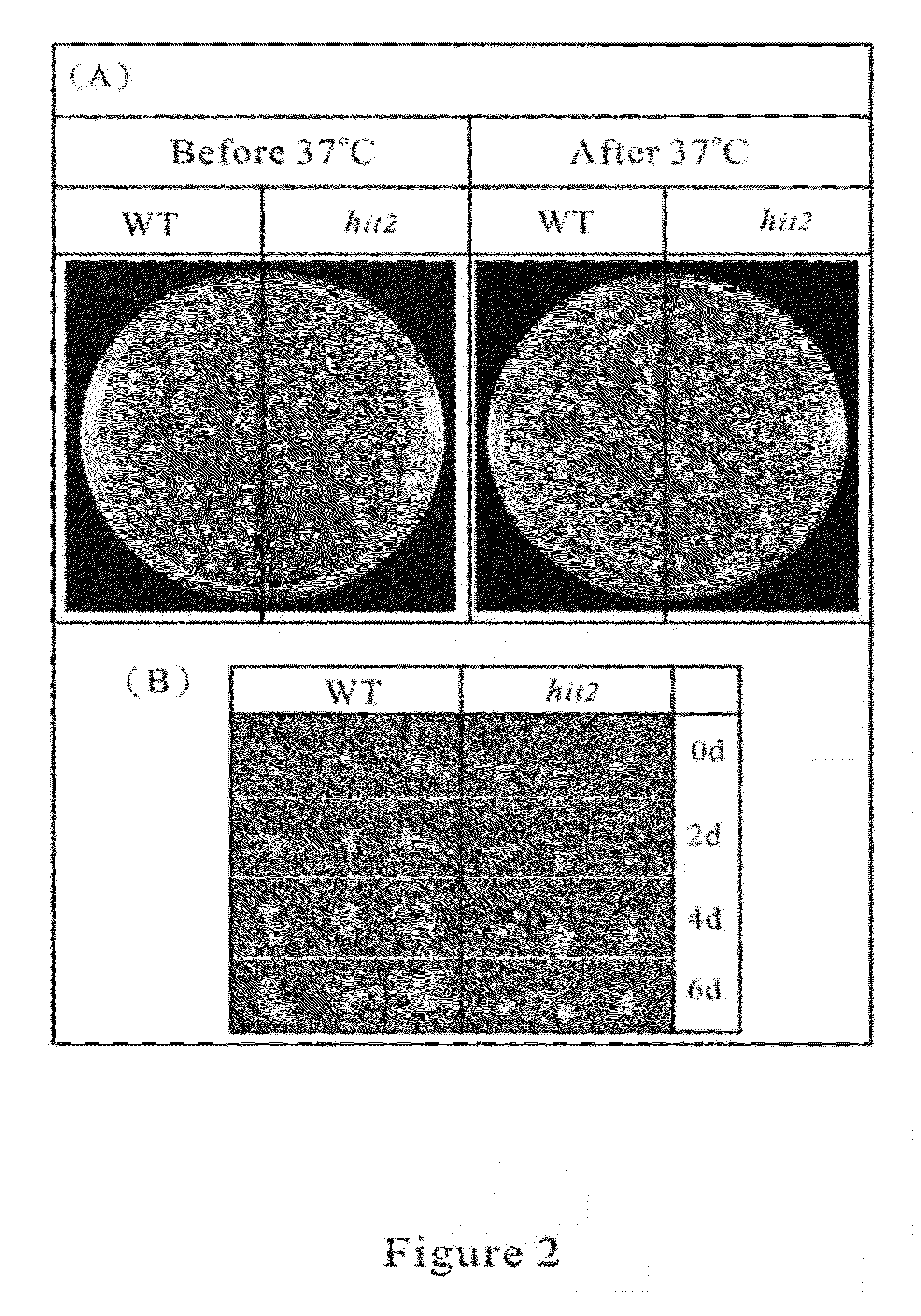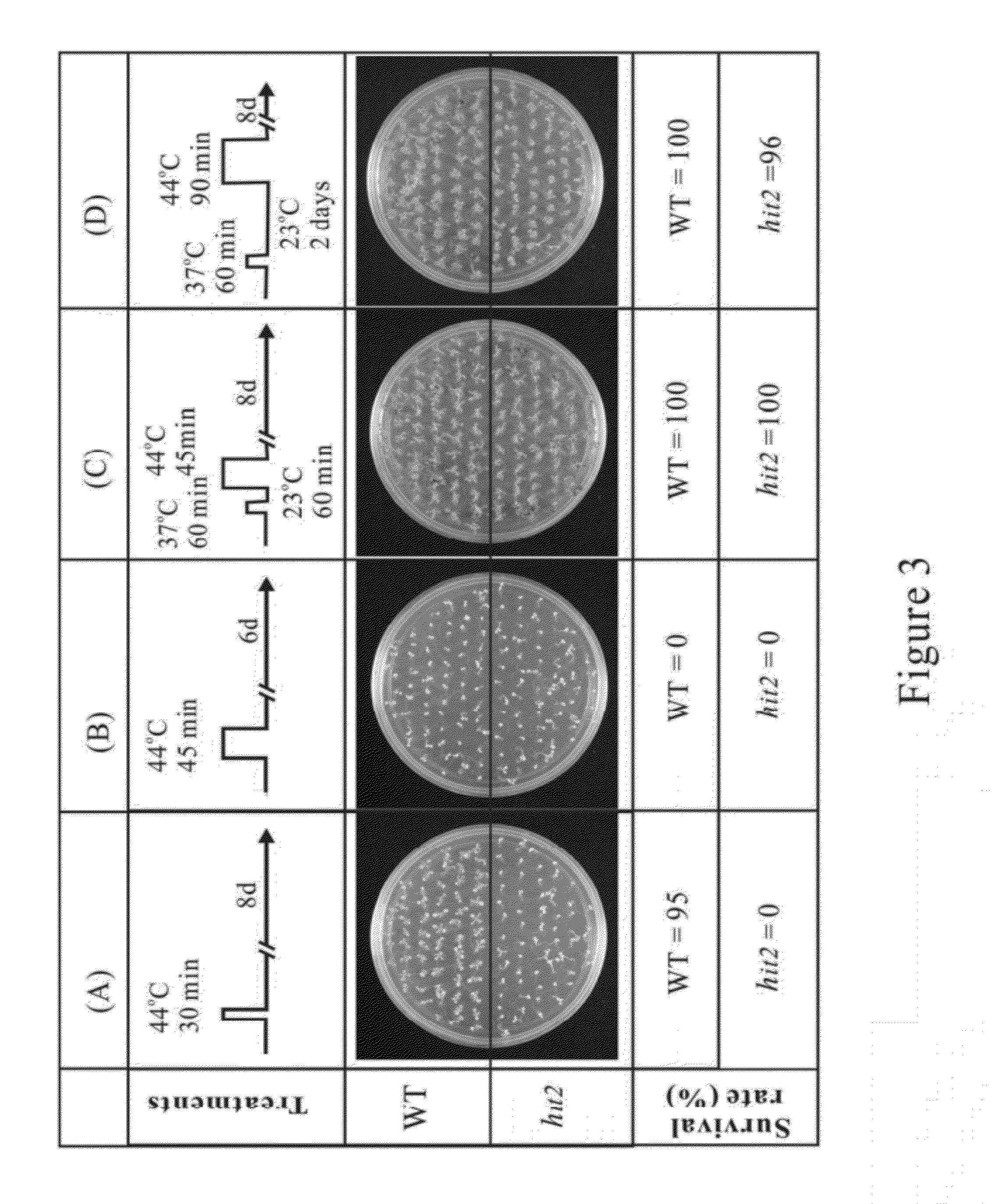Method for enhancing thermotolerance of plant and genetic engineering applications thereof
a technology of thermotolerance and plant, applied in the field of providing thermotolerance of plants, can solve the problems of environmental variation affecting and destroying plant growth, ecological calamity and food shortage problems, and may affect plant growth, so as to improve the survival rate of hit2 seedlings and make heat-induced oxidative damage wors
- Summary
- Abstract
- Description
- Claims
- Application Information
AI Technical Summary
Benefits of technology
Problems solved by technology
Method used
Image
Examples
embodiments
[0090]1. Construction of pCAMBIA1300-XPO1A
[0091]FIG. 7 illustrates a schematic diagram of the plasmid of pCAMBIA1300-XPO1A. In the embodiment, the chromosome of Arabidopsis thaliana was served as the template and primers SEQ ID NO 6 and SEQ ID NO 7 were used to amplify the XPO1A gene which is shown as SEQ ID NO 2 by PCR.
[0092]The amplified fragments and the vector pLOLA were digested by restriction enzymes Ncol and BamHI. The sequences of XPO1A gene were cloned into the vector via restriction sites for Ncol and BamHI using T4 DNA ligase to obtain pLOLA-35S-XPO1A-nos.
[0093]Digestion of pLOLA-35S-XPO1A-nos by Kpnl generated the sequences which contain promoter (SEQ ID NO 8), XPO1A gene and terminator (SEQ ID NO 9). The sequences which encoded XPO1A protein were ligated into the vector pCAMBIA1300 digested by Kpnl using T4 DNA ligase to obtain pCAMBIA1300-XPO1A (SEQ ID NO 10).
[0094]To construct the plasmids, mRNA was extracted from plant tissues by commercial kit (Genemark Plant Total ...
PUM
| Property | Measurement | Unit |
|---|---|---|
| temperature | aaaaa | aaaaa |
| volume | aaaaa | aaaaa |
| volume | aaaaa | aaaaa |
Abstract
Description
Claims
Application Information
 Login to View More
Login to View More - R&D
- Intellectual Property
- Life Sciences
- Materials
- Tech Scout
- Unparalleled Data Quality
- Higher Quality Content
- 60% Fewer Hallucinations
Browse by: Latest US Patents, China's latest patents, Technical Efficacy Thesaurus, Application Domain, Technology Topic, Popular Technical Reports.
© 2025 PatSnap. All rights reserved.Legal|Privacy policy|Modern Slavery Act Transparency Statement|Sitemap|About US| Contact US: help@patsnap.com



